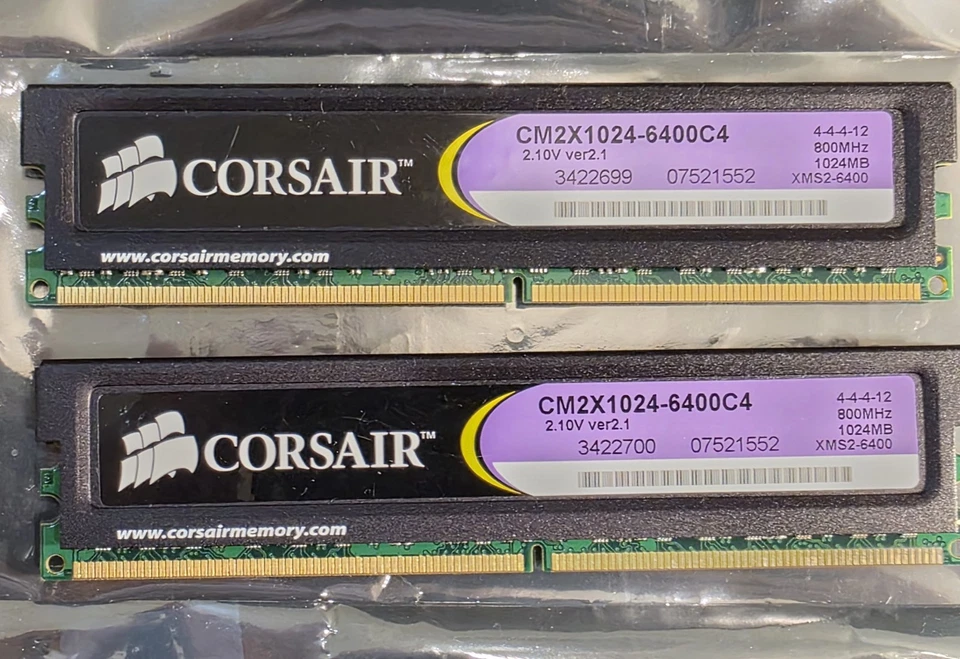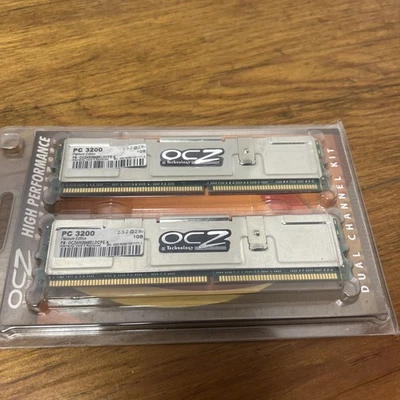DIMM Computer Memory (RAM 1 GB Capacity per Module)
Shop by category
7,583 results
Sort: Best Match
- Pre-Owned · Corsair$34.00or Best Offer$5.37 shipping
- Pre-Owned · PNY$25.00or Best Offer$5.15 shipping0 bids1d 23h
- Open Box · Hynix$16.95$4.95 shipping
- $95.00Free shipping30 sold
- $43.99Free shipping
- See Pictures For Most Accurate DescriptionBrand New · OCZ$19.99$9.25 shipping1 bid3d 21h
- Pre-Owned · Elpida$7.98$8.22 shipping
- Pre-Owned · Hynix$7.98$8.22 shipping
- Pre-Owned · Crucial$19.99$8.59 shipping0 bids6d 7h
- $15.95$7.49 shipping
- Pre-Owned · PNY$15.95$7.49 shipping
- $15.95$7.49 shipping
- $6.90$7.49 shipping
- Pre-Owned · Kingston$24.95or Best Offer$6.18 shipping
- Pre-Owned · Unbranded$69.99or Best Offer$13.28 shipping
- $17.95or Best OfferFree shipping
- $9.50Free shipping
- Pre-Owned · Samsung$6.90$7.49 shipping
- Pre-Owned · PNY$15.95$7.49 shipping
- Brand New · PNY$10.00or Best Offer$4.76 shipping
- Pre-Owned · Crucial$16.50$7.49 shipping
- Pre-Owned · Kingston$6.90$7.49 shipping
- $10.90$8.22 shipping
- Pre-Owned · Kingston$16.90$7.49 shipping
- $9.99or Best Offer$6.37 shipping
- Pre-Owned · Corsair$6.90$7.49 shipping
- $17.50$7.49 shipping
- Pre-Owned · Samsung$9.90$8.22 shipping
- $52.00$9.25 shipping
- Pre-Owned · Kingston$25.00or Best Offer$4.46 shipping
- $209.92Free shipping
- Pre-Owned · Samsung$90.00or Best Offer$5.00 shipping
- $19.95or Best Offer$7.00 shipping
- $47.90$8.22 shipping
- $19.95$6.21 shipping
- $10.50$7.49 shipping
- $21.00$5.37 shipping
- $10.90$8.22 shipping
- $34.63Free shipping
- Brand New · Computer Memory Solutions$27.50Free shipping58 sold
- Pre-Owned · Samsung$6.90$7.49 shipping
- $6.75Was: $7.50was - US $7.50$7.50 shipping
- $46.00or Best OfferFree shipping86 sold
- USA Seller + Lifetime Warranty + Free Technical SupportBrand New · A-Tech$26.24Free shipping79 sold
- $6.90$7.49 shipping
- $6.90$7.49 shipping
- Pre-Owned · Kingston$9.90$8.22 shipping
- Pre-Owned · G. SKILL$29.99$6.37 shipping
- Pre-Owned · Samsung$9.99$22.80 shipping0 bids1d 21h
- Pre-Owned · Qimonda$7.98$8.22 shipping
- $39.95$5.71 shipping
- $10.99$4.65 shipping
- Pre-Owned · HP$12.95or Best OfferFree shipping
- $6.90$7.49 shipping
- Tested in Great ConditionPre-Owned · Hynix$6.99$1.75 shipping0 bids2d 8h
- $10.96or Best OfferFree shipping
- Pre-Owned · Qimonda$9.95Free shippingOnly 1 left!
- Brand New · Patriot$18.99Was: $24.99was - US $24.99or Best OfferFree shipping
- $104.96Free shipping
- Brand New · A-Tech$34.63Free shipping






















































































